S17 Beach in Sainte Luce
Welcome to Madagascar: How I Found Myself on the Eighth Continent
By Kass Wojcik
September 3, 2023
I never thought that I would go to Madagascar. It seems strange now after spending two of the most extraordinary months of my life there, but it really just was never a place that was on my radar.
Part of it was that I didn’t know much about it. Having majored in biology at university, I knew a little bit about its unique wildlife (lemurs, they definitely have lemurs. . .right?) and environmental crises (something about cutting down trees and maybe mining?), but not much more than that. I did know that Madagascar is an island off of the east coast of Africa unlike the friend who when I told him I was going there, asked me, “where in Europe is that?” but I’m embarrassed to say that most of my knowledge (like most Americans it seems) came from the classic 2005 DreamWorks Animation movie, Madagascar.
Madagascar doesn’t get the attention that it deserves. It’s the fourth largest island nation in the world and sits about 400km off of the coast of Mozambique in the Indian Ocean. It’s one of the hottest biodiversity spots on Earth and is often referred to as the “eighth continent” due to its extraordinary range of ecosystems and its fantastic array of unique plants and animals, about 80% of which are endemic (i.e. found nowhere else in the world). When Madagascar does get attention, it tends to be negative. Besides being one of the poorest countries in the world, with 92% of the population living on less than $2 a day, it’s also been going through a famine for the past several years. It’s extremely at risk from climate change and habitat loss, and the country is often unjustly held up as an example of why people are bad for the environment. None of those facts tell the whole story. Not even close.
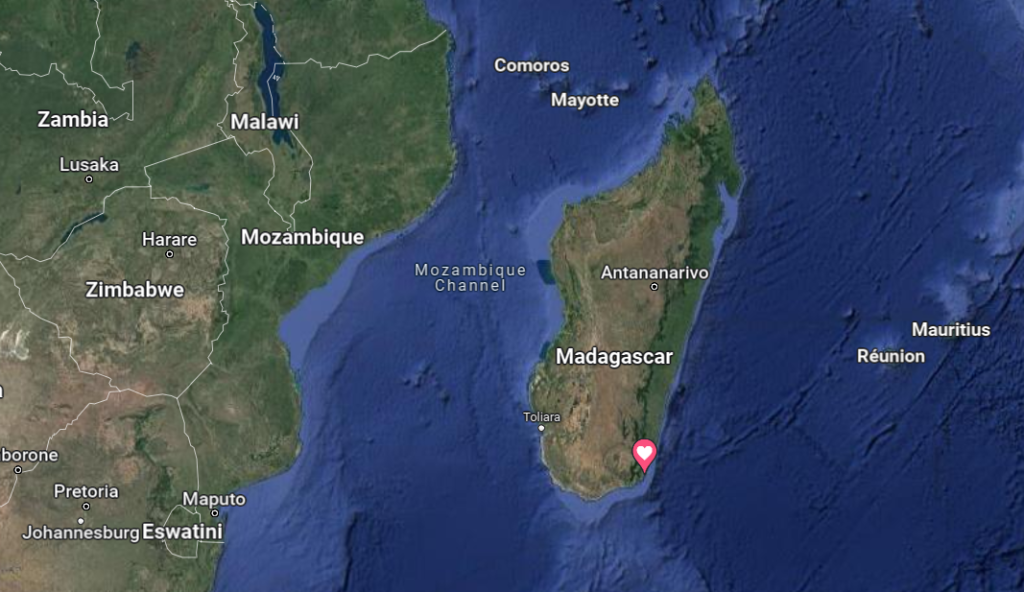
When I first started planning the pollinator conservation side of my fellowship (I frequently think of my project as having two sides that intersect: the beekeeping/agricultural side and the pollinator conservation/research side—if you want to learn more about the fellowship that I’m traveling under and the project I’m working on, head over to the About Me page), I used very sophisticated search terms like “what is pollinator” and “pollinators around world,” thinking that if I could figure out what kinds of pollinators were out there, I could use that to help me pick out where I might find some interesting research and conservation work going on. Among the long lists of bees, bats, butterflies, birds, beetles, wasps, flies, moths, thrips (think tiny bugs), rodents, and lizards that I went through, one group of animals stuck out to me: lemurs. They were one of the only mammal groups on the list, and unlike most of the other pollinators that were included, their more than 100 species are limited to only one country: Madagascar.
After seeing lemurs on the list, I marveled at how cool nature is before idly closing out the tab and forgetting about lemurs and Madagascar until months later. At that time, Madagascar still just didn’t seem like a place I would go—could go. It was so far, so remote, so unknown, at least to me. I had never heard of anyone going to Madagascar, and it didn’t even cross my mind as an option—that is until I went to the New Jersey State Beekeeping Conference in November of 2022.
At the time of the conference—which is a daylong get together of beekeepers from across New Jersey and sometimes the neighboring states—I was due to start my fellowship in early January 2023. Despite having had over seven months to plan for my project since I had been notified that I was a fellowship recipient in March, and despite having already pushed my departure date back by four months when I realized that I wasn’t ready to leave by my original date in August, I still had no idea where I was going first. I had some vague plan to try to hit every continent over the course of my fellowship year and to start by staying with some relatives in Australia where I would “figure it out,” but that was about it. There had always seemed like there was so much time to work out a plan and make decisions about things, but now here I was less than two months out and I still had nothing to show for it.
This was a bit of a problem of course, and so as you can probably imagine, I jumped at the opportunity when I was introduced to Dr. David Peck, Director of Research and Education at Betterbee, and he offered to put me in contact with an organization that he had done some beekeeping work with, in of all places, Madagascar.
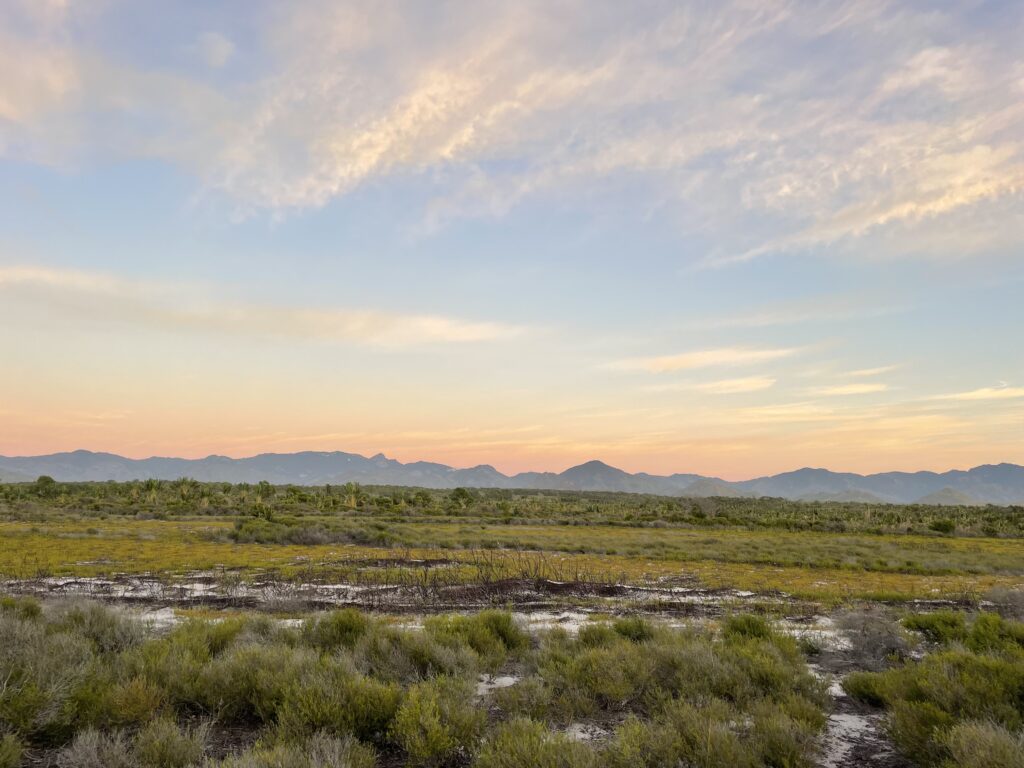
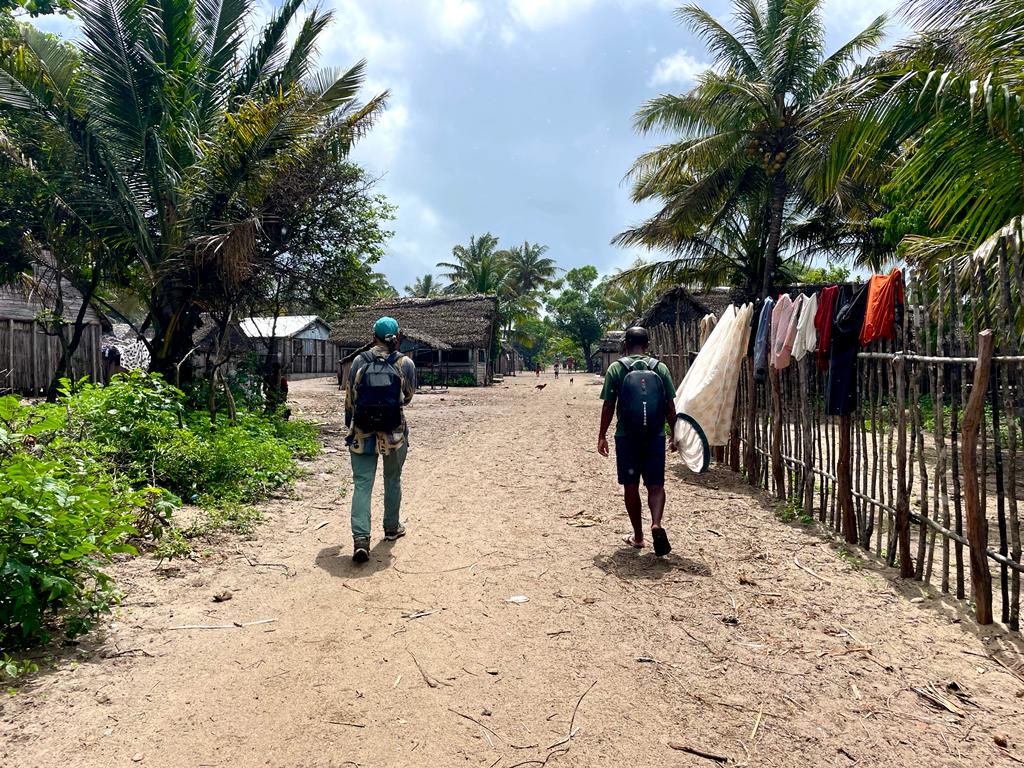
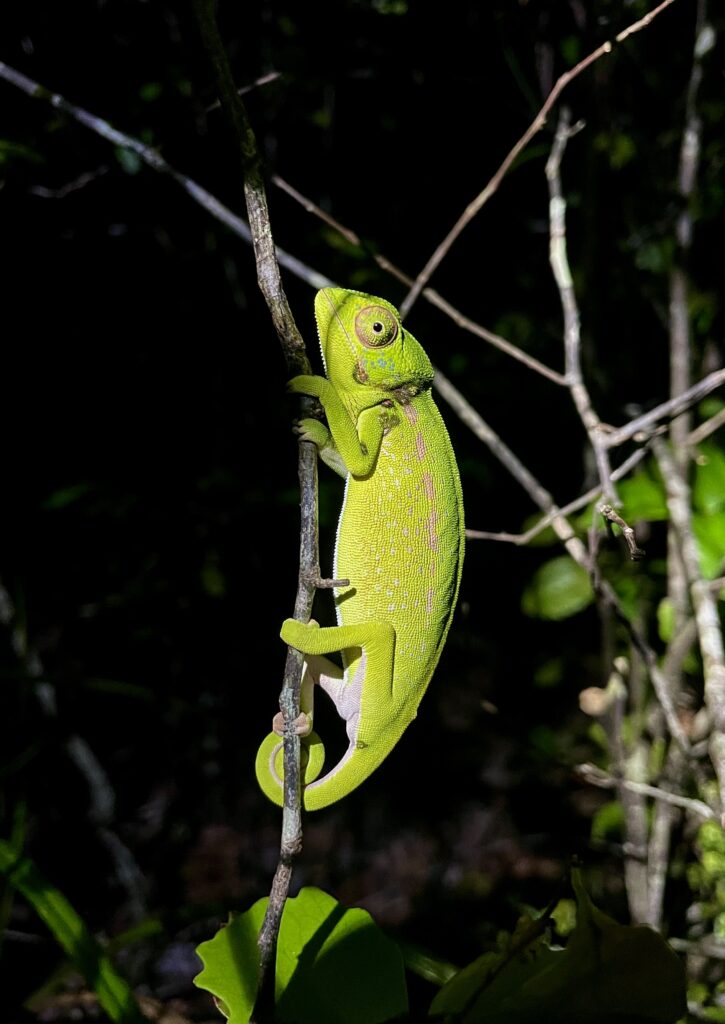
Dawn breaks over mountain backed scrubland; SCRP volunteer, Tabea, and Team Leader, Hoby, walk towards the village of Ambandrika after a survey; and a chameleon poses perfectly for me on a night survey
The organization was called SEED Madagascar, and from some googling, I learned that they were a small UK charity that had been based in southeast Madagascar for over twenty years doing a mix of conservation and sustainable development work in partnership with some of the local communities there. They had volunteering positions open with their Conservation and Research Program (SCRP), which operates out of a field camp in a small area along the southeast coast called Sainte Luce. SCRP is made up of a team of national and international staff who are working on projects to monitor and assess the populations of plants and animals living in the fragile littoral rainforest ecosystem of Sainte Luce. Their goal is to learn more about the species living in these lowland coastal rainforests and to find ways to protect them in partnership with the local community. While the position wouldn’t necessarily involve beekeeping, it would involve research and conservation projects related to lemurs, bats, and other pollinators, which sounded ridiculously cool and relevant to what I wanted to do. I spent quite some time researching SEED to make sure that they were doing genuinely good work in Madagascar, and then I applied to volunteer with them.
One month, two airports, and about 48 hours of travel later, I found myself stepping off of a plane onto the windy tarmac of Ivato International Airport in the capital of Madagascar. I was about 8,700 miles (14,000km) from home—the furthest I’d ever been—and I wasn’t quite sure what I had gotten myself into. I just knew that I was excited. And tired. And definitely stinky. But most of all excited.
Over the course of the next two months that I spent in Madagascar, that excitement came to be joined by feelings of joy, wonder, amazement, anger, sadness, and a feeling that I can only describe as a great thoughtfulness. There was always something new, something wondrous, something fantastic or terrible, to see or discover. I truly believe that Madagascar is one of the most extraordinary places in the world, and my goal with these next few blog posts is to try to put into words what I saw, experienced, and learned while volunteering and travelling in the southeast, one of the lesser travelled parts of Madagascar and probably the world. I also want to try to get across the fascinating, important, and urgent work taking place there (including on pollinators and other things) as communities and ecosystems in Madagascar experience increasing pressures from things like climate change, habitat loss, and social injustice. I hope that you can at least get a little bit of a sense of this amazing place and the work taking place there. If not, hopefully you’ll at least learn that while Madagascar does not actually have penguins, it does have giant snails, tiny chameleons, and lemurs that sing (although maybe not in the way Madagascar the movie would have you expect). And maybe just maybe, you’ll decide to see it for yourself one day. Happy reading.
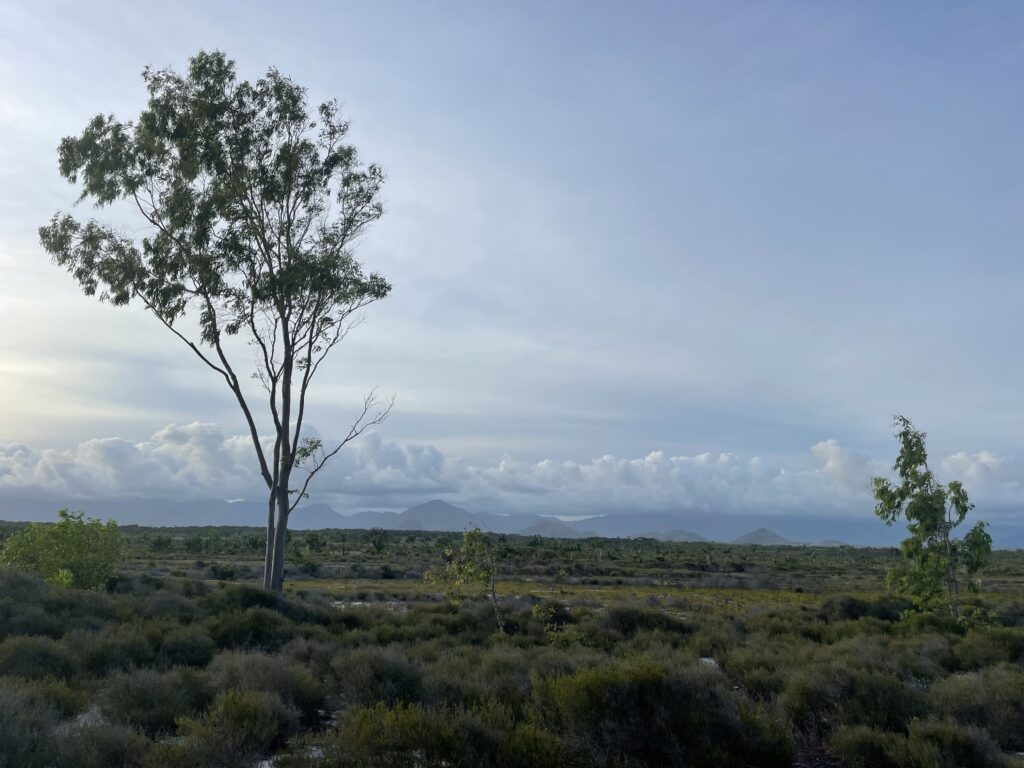
Clouds brewing over Sainte Luce

I’m loving these pieces and I will peruse them later!